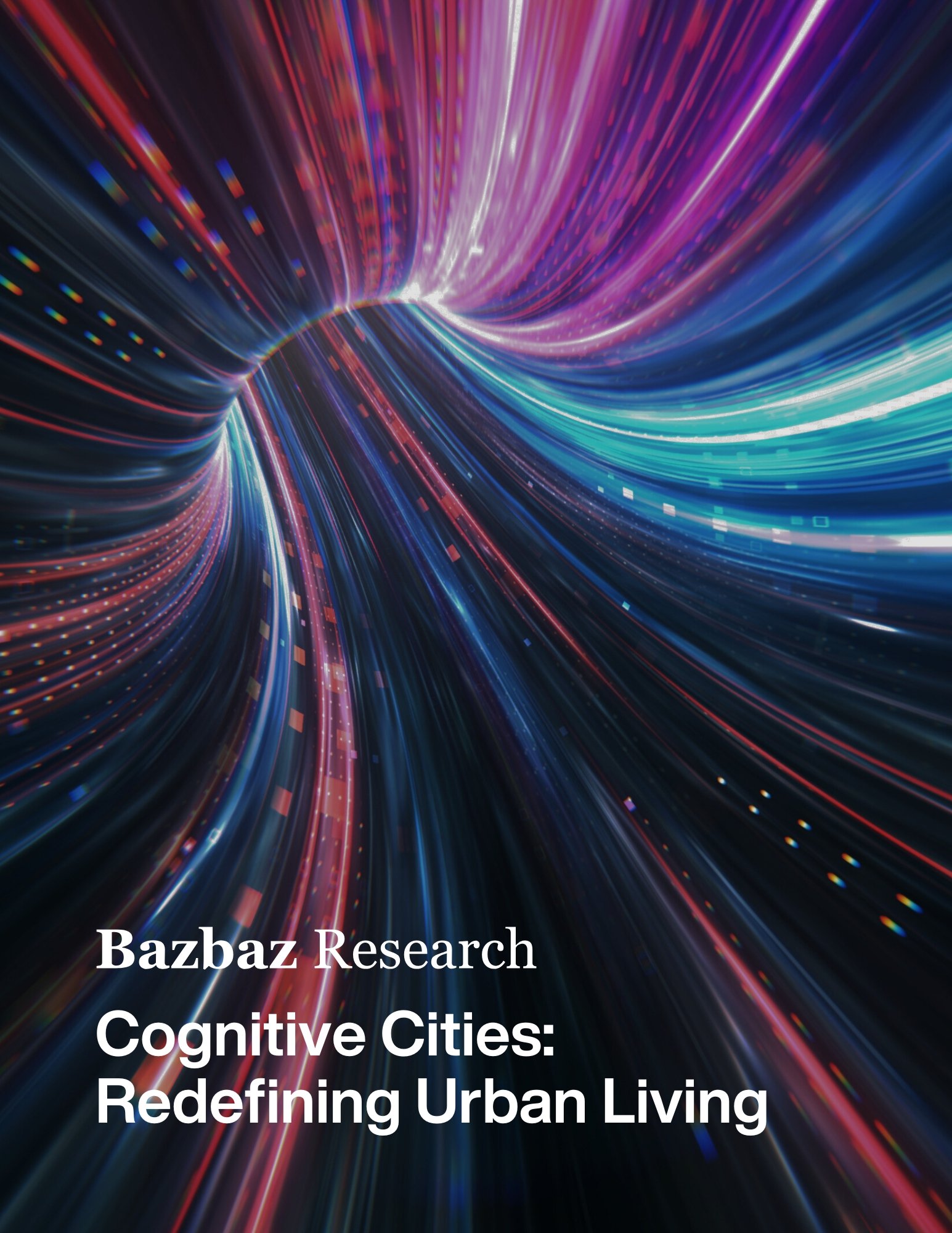Cognitive Cities: Redefining Urban Living
Cognitive Cities: Redefining Urban Living
Hashem Al-Hussieny
This century is characterized by fast urbanization, technological development, and the need for sustainable development. Many cities across the world are facing challenges such as climate change, lack of resources, and increased population.
What Are Cognitive Cities?
In response to these challenges, the concept of cognitive cities has emerged, blending advanced technologies like artificial intelligence (AI), the Internet of Things (IoT), and sustainable design principles to create urban environments that are adaptive, efficient, and human-centric.
A Step Beyond Smart Cities
Cognitive cities are not just an evolution of smart cities; they represent a radical change in urban planning. They emphasize interdependence, real-time adaptation, and continuous improvement of people’s environment.
Key Features of Cognitive Cities
Learning and Adaptation Through AI and IoT
Cognitive cities are able to “think” and “learn” through the adoption of AI and IoT. These technologies enable real-time data capture, processing, and decision-making, allowing cities to dynamically meet the needs of their populations.
Integrated and Interconnected Infrastructure
One of the defining features of cognitive cities is their interconnected infrastructure. IoT is constantly used to manage energy, transportation, public services, and garbage disposal. AI algorithms analyze this data to recognize patterns, forecast future needs, and solve problems before they arise.
Sustainability at the Core
Cognitive cities integrate renewable energy sources, green buildings, and circular economies to ensure environmental conservation. This sustainable design is complemented by a human-centered approach that promotes fairness, compassion, and health for residents.
NEOM: A Visionary Metropolis
NEOM, an ambitious project in northwest Saudi Arabia, exemplifies the essence of a cognitive city.
Cutting-Edge Technologies
NEOM leverages AI and IoT to manage resources, transportation, and public services. Autonomous vehicles, drone delivery systems, and AI-driven healthcare are among the innovative features planned to improve the quality of life for residents.
The Line: A Sustainable Urban Model
A key development within NEOM, The Line, reimagines urban living with its linear design, free of cars and streets. High-speed transit systems, IoT-enabled smart homes, and carbon-neutral goals are central to its futuristic approach.
Commitment to Sustainability
NEOM’s reliance on renewable energy sources, such as solar, wind, and hydrogen, underscores its commitment to sustainability. Green spaces, desalination technologies, and water recycling systems preserve natural resources, while industries like biotechnology and advanced manufacturing diversify the economy.
A Human-Centric Focus
NEOM prioritizes healthcare, education, and cultural initiatives, aiming to create an inclusive and innovative community.
Oxagon: High-Tech Industrial Hub
Oxagon, another cornerstone of NEOM, represents a radical reimagining of industrial cities.
Innovative Design and Sustainability
Located on the Red Sea coast, Oxagon’s octagonal shape symbolizes balance and innovation. It integrates advanced manufacturing, logistics, and urban living.
Technological Advancements
AI-driven logistics, IoT-enabled factories, and autonomous transportation networks ensure efficiency. Fully automated port operations enhance global trade, while smart energy grids optimize power distribution.
Global Context and Vision 2030
Saudi Arabia’s Vision 2030 outlines a transformative agenda to diversify the economy, enhance public services, and promote sustainability. NEOM and Oxagon align with these goals, showcasing how cognitive cities can drive economic growth while addressing urban challenges.
Cognitive Cities Worldwide
Cities like Singapore, Copenhagen, and Amsterdam have implemented elements of cognitive city planning, including smart grids, AI traffic management, and green architecture. However, NEOM and Oxagon go further, combining these technologies into unified, ambitious projects.
Transformative Era for Urban Living
Cognitive cities represent a bold vision for the future of urban living. By integrating AI, IoT, and sustainable design, they address pressing global challenges. NEOM and Oxagon serve as pioneering examples of how cognitive cities can combine technological innovation with environmental and social well-being.
Shaping the Future of Urban Planning
As Saudi Arabia advances its Vision 2030 agenda, NEOM and Oxagon stand as symbols of a transformative era. Their success will influence global trends in smart city development, paving the way for a future where technology and sustainability create inclusive, thriving urban environments.
The Implications of Cognitive Cities
Cognitive cities like NEOM and Oxagon are not only blueprints for future urban developments but also catalysts for global collaboration. They provide an opportunity to share knowledge and practices across borders, fostering a worldwide commitment to sustainability and technological advancement.
As these projects evolve, they set the stage for addressing global challenges such as climate change, resource scarcity, and social inequality. By prioritizing human-centric and inclusive values, cognitive cities promote equity and shared prosperity for diverse populations.
Furthermore, these developments encourage partnerships between governments, industries, and academic institutions, accelerating innovation and scaling solutions for broader applications.
Conclusion
While challenges such as cost, governance, and public acceptance remain, the success of NEOM and Oxagon could inspire a new generation of cities that bridge the gap between futuristic ambitions and practical implementation, redefining the future of urban living for decades to come.

